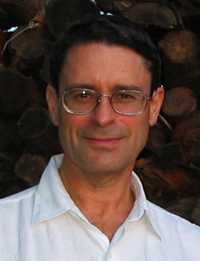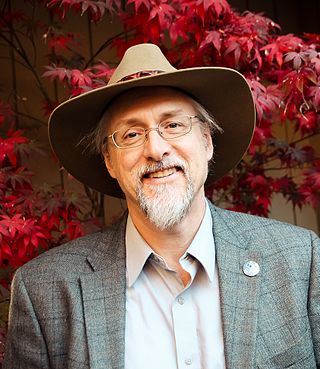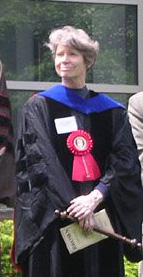Related Research Articles

The American Astronomical Society is an American society of professional astronomers and other interested individuals, headquartered in Washington, DC. The primary objective of the AAS is to promote the advancement of astronomy and closely related branches of science, while the secondary purpose includes enhancing astronomy education and providing a political voice for its members through lobbying and grassroots activities. Its current mission is to enhance and share humanity's scientific understanding of the universe as a diverse and inclusive astronomical community.

Steven Jeffrey Ostro was an American scientist specializing in radar astronomy. He worked at NASA's Jet Propulsion Laboratory. Ostro led radar observations of numerous asteroids, as well as the moons of Jupiter and Saturn, Saturn's rings, and Mars and its satellites. As of May 2008, Ostro and his collaborators had detected 222 near-Earth asteroids and 118 main belt objects with radar.

Marc William Buie is an American astronomer and prolific discoverer of minor planets who works at the Southwest Research Institute in Boulder, Colorado in the Space Science Department. Formerly he worked at the Lowell Observatory in Flagstaff, Arizona, and was the Sentinel Space Telescope Mission Scientist for the B612 Foundation, which is dedicated to protecting Earth from asteroid impact events.
Bruce William Hapke is a noted American planetary scientist, currently a professor emeritus at the University of Pittsburgh and a specialist in bidirectional reflectance spectroscopy.
The Gerard P. Kuiper Prize is awarded annually by the Division for Planetary Sciences of the American Astronomical Society for outstanding lifetime achievement in the field of planetary science. The prize is named for Gerard P. Kuiper.
The Division for Planetary Sciences (DPS) is a division within the American Astronomical Society (AAS) devoted to Solar System research. It was founded in 1968. The first organizing committee members were: Edward Anders, Lewis Branscomb, Joseph W. Chamberlain, Richard M. Goody, John S. Hall, Arvidas Kliore, Michael B. McElroy, Tobias Owen, Gordon Pettengill, Carl Sagan, and Harlan James Smith. As of 2009, it is the largest special-interest division within the AAS. As of Oct 2010, membership totaled approximately 1415 planetary scientists and astronomers, including about 20% residing outside the U.S.
The Carl Sagan Medal for Excellence in Public Communication in Planetary Science is an award established by the Division for Planetary Sciences of the American Astronomical Society to recognize and honor outstanding communication by an active planetary scientist to the general public. It is awarded to scientists whose efforts have significantly contributed to a public understanding of, and enthusiasm for planetary science.
Philip D. Nicholson is an Australian-born professor of astronomy at Cornell University in the Astronomy department specialising in Planetary Sciences. He was editor-in-chief of the journal Icarus between 1998 and 2018.

Reta F. Beebe is an American astronomer, author, and popularizer of astronomy. She is an expert on the planets Jupiter and Saturn, and the author of Jupiter: The Giant Planet. She is a professor emeritus in the Astronomy Department at New Mexico State University and 2010 winner of the NASA Exceptional Public Service medal.

Carle McGetchin Pieters is an American planetary scientist. Pieters has published more than 150 research articles in peer-reviewed journals and was co-author of the book Remote Geochemical Analyses: Elemental and Mineralogical Composition along with Peter Englert. Her general research efforts include planetary exploration and evolution of planetary surfaces with an emphasis on remote compositional analyses.
Eberhard Grün is a German planetary scientist who specialized in cosmic dust research. He is an active emeritus at the Max Planck Institute for Nuclear Physics (MPIK), Heidelberg (Germany), research associate at the Laboratory for Atmospheric and Space Physics (LASP) in Boulder (Colorado), and was a professor at the University of Heidelberg until his retirement in 2007. Eberhard Grün has had a leading role in international cosmic dust science for over 40 years.
Dale P. Cruikshank is an astronomer and planetary scientist in the Astrophysics Branch at NASA Ames Research Center. His research specialties are spectroscopy and radiometry of planets and small bodies in the Solar System. These small bodies include comets, asteroids, planetary satellites, dwarf planets, and objects in the region beyond Neptune. He uses spectroscopic observations made with ground-based and space-based telescopes, as well as interplanetary spacecraft, to identify and study the ices, minerals, and organic materials that compose the surfaces of planets and small bodies.

Andrew Perry Ingersoll is a professor of planetary science at the California Institute of Technology. Ingersoll was elected to the American Academy of Arts and Sciences in 1997. He received the lifetime achievement award in planetary science, the Gerard P. Kuiper Prize, in 2007. He proposed the runaway greenhouse effect and is known for his research on planetary atmospheres and climate.

Amanda R. Hendrix is an American planetary scientist known for her pioneering studies of solar system bodies at ultraviolet wavelengths. She is a senior scientist at the Planetary Science Institute. Her research interests include moon and asteroid surface composition, space weathering effects and radiation products. She is a co-investigator on the Cassini UVIS instrument, was a co-investigator on the Galileo UVS instrument, is a Participating Scientist on the Lunar Reconnaissance Orbiter LAMP instrument and is a Principal Investigator on Hubble Space Telescope observing programs. As of 2019, she is also the co-lead of the NASA Roadmaps to Oceans World Group.

Christina "Chrissy" Richey is an American planetary scientist and astrophysicist working at Jet Propulsion Laboratory in La Cañada Flintridge, California. Richey is a project staff scientist for the Europa Clipper mission and is a research technologist in the Astrophysics and Space Sciences Section. Prior to working at JPL, Richey worked as contractor for Arctic Slope Regional Corporation at NASA Headquarters in Washington, D.C. They were a program officer in NASA's Planetary Science Division, the deputy program scientist for the OSIRIS-REx mission, and the deputy science advisor for research and analysis for the Science Mission Directorate.

Henry B. Throop, is an American astronomer and planetary scientist who specializes in the dynamics of rings and dust in the outer solar system. Throop is a member of the science team for NASA's New Horizons mission to Pluto and the Kuiper Belt, and has been involved with NASA missions throughout the solar system. Throop lives in Washington, DC where he runs NASA's science programs in the outer solar system. He has done extensive education and outreach around the world, having spent nearly a decade as an astronomer living in South Africa, India, and Mexico. The asteroid 193736 Henrythroop is named after him.

Amy Simon is an American planetary scientist at NASA's Goddard Space Flight Center, involved in several missions of the Solar System Exploration Program.
Carrie Nugent is an assistant professor of computational physics and planetary science at Olin College. She studies near-Earth objects. She is also a popular science communicator, and is a Senior TED Fellow. The asteroid 8801 Nugent was named after her.
Melissa McGrath is an astronomer whose expertise is the atmosphere and magnetosphere of the Solar System planets and their moons. Her main interest has focused on imaging and spectroscopic studies of Jupiter’s Galilean moons. She is currently co-investigator on the ultraviolet spectrometer instrument on ESA JUICE mission to Ganymede, and co-investigator on two proposed instruments on the NASA Europa Clipper mission. McGrath is senior scientist at SETI Institute in Mountain View, California.
Kelsi N. Singer (born 1984) is an American planetary scientist who is a senior research scientist at the Southwest Research Institute (SwRI) in Boulder, CO. She is a co-investigator and deputy project scientist of NASA's New Horizons mission studying the geomorphology and geophysics of the Pluto system and of Arrokoth (2014 MU69).
References
- 1 2 "(90502) Buratti". Minor Planet Center. Retrieved 22 January 2020.
- ↑ "Jet Propulsion Laboratory: Bonnie Buratti". JPL.Gov. Retrieved 10 May 2015.
- ↑ Buratti, Bonnie (May 2015). "Photometry of Pluto 2008--2014: Evidence of Ongoing Seasonal Volatile Transport and Activity". Astrophysical Journal Letters. 804 (1): L6. Bibcode:2015ApJ...804L...6B. doi:10.1088/2041-8205/804/1/L6. S2CID 120608692.
- ↑ Buratti, J., Bonnie (1 April 2005). "Cassini Visual and Infrared Mapping Spectrometer Observations of Iapetus: Detection of CO2". The Astrophysical Journal Letters. 622 (2): L149–L152. Bibcode:2005ApJ...622L.149B. doi: 10.1086/429800 .
- ↑ "Teachers Touch The Sky". jpl.nasa.gov. Archived from the original on 18 May 2015. Retrieved 14 May 2015.
- ↑ "DPS Officers". Division of Planetary Sciences. Retrieved 17 May 2015.
- ↑ "Rosetta Team Members". JPL. Archived from the original on 17 October 2016. Retrieved 5 October 2016.
- ↑ "MPC/MPO/MPS Archive". Minor Planet Center. Retrieved 22 January 2020.
- ↑ "Fellows Alphabetic List". American Geophysical Union.
- ↑ "Sagan Medal DPS Prizes". American Astronomical Society – Division for Planetary Sciences. Retrieved 22 January 2020.
- ↑ "2022 Kuiper Prize Recipients". |url=https://dps.aas.org/prizes/2022/
- ↑ "AAS Names 21 New Fellows for 2024". American Astronomical Society. February 1, 2024. Retrieved 2024-02-02.